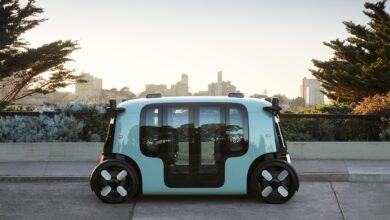“Ready for Liftoff: Zipline’s Drone Delivery Set to Soar in US Cities”
The much-anticipated rise of drone deliveries to consumers' doorsteps might finally see significant progress in 2024.

Zipline, a San Francisco-based drone delivery company, is gearing up to launch several projects in U.S. cities next year and aims to expand its operations to 15 locations by 2025, as reported by Yahoo Finance.
While drones have been used for deliveries, particularly in emergencies and medical supply transport, it remained a specialized service. However, a pivotal rule change by the FAA in September has opened avenues for broader use of unmanned aerial vehicles.
Previously, FAA regulations mandated that delivery drones remain in the line of sight of ground observers along their route. But with the recent exemption granted to Zipline and two other drone firms, commercial deliveries without visual observers are now permitted.
This regulatory shift, according to Rob Enderle, President of the Enderle Group, marks a significant step toward eventual autonomous drone delivery, essential for cost-effective and efficient scaling of the technology.
Zipline, in a statement on its website, hailed the FAA’s exemption as a transformative move for logistics and equitable access in the U.S., laying the groundwork to deliver various items like food, medicine, and consumer goods efficiently and sustainably, resulting in a remarkable 97% reduction in emissions per delivery compared to traditional gas-powered vehicles.
Adam Robertson, Chief Technology Officer at Fortem Technologies, however, argued that relying on “exemptions” has hindered the industry’s progress. He emphasized the need for comprehensive regulations rather than sporadic exemptions to drive mainstream adoption of drone delivery.
Reflecting on past predictions, Tom Walker, CEO of DroneUp, headquartered in Virginia Beach, noted Amazon CEO Jeff Bezos’s earlier forecast about obtaining FAA approvals for drone delivery in a shorter timeframe. Bezos overestimated the speed at which the FAA would navigate regulatory changes, according to Walker.

The path ahead for drone delivery remains obscured by regulatory uncertainties, according to industry experts. Despite technological advancements, the slow-moving nature of regulatory frameworks poses a significant barrier to widespread adoption.
Speaking on the regulatory landscape, industry insiders emphasized the necessity of aligning drone delivery operations with established rules rather than relying on exemptions. The current reliance on regulatory waivers for drone delivery in the U.S. underscores the need for comprehensive integration into national airspace, ensuring safety measures are robust.
One critical milestone set by the FAA allowing out-of-sight drone deliveries signifies a pivotal step forward. However, concerns persist regarding scalability, cost-efficiency, and air traffic control complexities.
Delivery service providers emphasize the necessity of remote operations and visual out-of-sight capabilities to enhance cost-effectiveness. Forecasts point to the initiation of visual out-of-sight deliveries by Q3 of 2024, marking a potential turning point in scaling drone delivery services.
Despite technological progress, challenges loom large. The limitations imposed by FAA regulations and the technological capacity for lift and launch hinder cost-effectiveness. Moreover, the issue of air traffic control emerges as a critical concern. The current strain on staffing for traditional air traffic control systems raises questions about the readiness to manage the influx of drones into the airspace without a centralized control system.
However, skepticism exists about the true demand for drone deliveries among consumers. Existing same-day delivery options provided by major retailers like Amazon prompt doubts about the immediacy and necessity of drone-based delivery for routine products. This skepticism raises pertinent queries about the urgency of implementing drone delivery systems for everyday use.
“Traditional delivery methods might serve urban needs well, prompting questions about whether the added complexity and expenses of drone delivery truly match what consumers consider essential,” he noted.
However, one domain where rapid delivery holds significant value is in meal delivery.
“We’re actively engaged in delivering for a fast-food chain,” Walker explained. “Our reorder rate stands at an impressive 90%, and we ensure deliveries within a speedy 15.9 minutes from order to doorstep. Plus, there’s no need to tip a drone, which consumers genuinely appreciate.”
Highlighting another advantage discovered through drone delivery, he mentioned, “Porch theft affects two in five Americans. By delivering to the backyard, we’ve successfully eliminated any reports of such theft.”
This tech news snippet sheds light on the contrasting dynamics between traditional and drone delivery while underscoring the distinct advantages, especially in meal delivery and security, that drone-based services can offer.
Revolutionizing the Final Stretch

In the realm of economic sectors ripe for innovation, package delivery firms stand out as eager adopters of expanded drone delivery services. The allure lies in the technology’s potential to dramatically slash the costs associated with the crucial “last mile.”
Enderle highlighted the escalating expenses and labor intensity tied to this final leg of delivery, citing the mounting concerns over safety for drivers and the financial toll on merchants due to increased thefts and violence.
Walker provided insightful statistics, revealing that a staggering 90% of packages delivered within neighborhoods weigh eight and a half pounds or less and are stored within a mere five-mile radius from their destination. Yet, the paradox prevails with massive trucks navigating aging infrastructure, leading to soaring fuel and labor expenses.
Painting a vivid picture, Walker envisioned the transformative impact of drones: “With a drone, we can manage deliveries of up to 10 pounds at a fraction of the current $16 to $20 cost, potentially reducing it to below $3.”
In a reflection on the current scenario, Robertson shared his 2023 Christmas shopping experience, emphasizing the prevalent reliance on traditional delivery methods involving individuals physically carrying packages to doorsteps. He underscored the significant human labor involved, highlighting the costly and resource-intensive nature of the final mile or two in each delivery.
He went on to stress the potential game-changing shift: “If delivery drones can execute faster, cheaper, or enhance efficiency in any way, they could swiftly establish economic viability, heralding the gradual replacement of the existing human-centric last-mile delivery paradigm.”
This technology promises to revolutionize the delivery landscape, offering a tantalizing glimpse into a future where drones might redefine the efficiency, cost-effectiveness, and overall viability of the “last mile” in package delivery.




